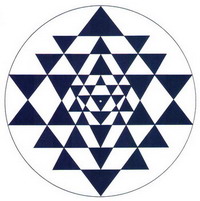A Pagan perspective, an opportunity for creating an evolving society through a tribal level of organization.
Pagan social circles search for a sense of community.
The problem is that our social context has been without tribes for 2000 or more years.
Tribes have been destroyed in the past 2000 years or more.
Outlook and Methodology
There is a yearning for community and social structure in human beings.
It would develop organically for successful social groups. These social groups in history came and went organically and revolved around tribal structures.
This paper will describe the destruction of tribal structures over the past 2000 years or more; and, the social acceptance of social structures that deny organic development and social competence, in lieu of autocratic and defined organizational structures under some conservative power control. This will describe the psycho-social dependency of known experiences as opposed to reifying and reconstruction of more workable structures of the past or the ability to evolve a social structure more satisfying to a diverse group of peoples.
There is nothing unique among groups of people reaching out for independence, away from stultifying dominion of city state, national dominance that oppresses people. The inefficiency and lack of resources where human dignity is lost while elites and autocrats of various descriptions garner resources and riches to the detriment of the lowest rungs of society. The seeds for social collapse re-occur only to recreate the same lack of responsive relationships in a stratified society. People lose empathy and identity to all strata of society.
What occurs after social isolation and disenfranchisement, with an attempt to organize socially, is a reversion to similar social behaviors and supporting other autocratic structures with cognitive dissonance not seeing it being like the social structure they have left.
I will demonstrate this by describing social trends due to changes in society through history. The decades of depravation of social instruction where new behaviors that are even detrimental are adopted.
I will describe from articles describing state dependent behavior and learning where there is addictive behavior refusing to adopt new behaviors, even where there is evidence of needed change. Cognitive dissonance, neuroticism, and cultural reinforcement denies positive changes from both internal and external sources.
I will use Edward T. Hall’s model from “The Silent Language” for defining societal education with terms of informal, formal, and technical methods.
Lastly, I will posit what can be used to counteract this lack of tribal behavior, and a few additional behaviors to expand the diversity needed for future models of human behavior.
Tribes have a few common elements for long standing viability. A sustainable food source, division of labor, and social constructs that made for social mobility, and learning opportunities to and for each division of labor whether it is technical, formal, or informal adoption of technical or social skills.1 These educational opportunities come from family, social orders of labor division, clan or familial history, religious instruction, or societal organizations that reflect archetypical identities within a tribal structure.
When food sources shift, either in availability or in geography successful tribal migration depend on adaptation of leaders, societal stories, religious stories of previous generations successful adoption of other behaviors, along with stories that reflect that change or adoption of new stories to encourage the evolution and or adoption of different survival strategies.
Historical destruction of tribes.
Tribal expansion into city states can be traced back to Sumeria. Tribal behavior that had division of labor for grain, fishing, farming, creation of textiles, pottery took one additional step. The building, use of and maintenance of irrigation canals. The initial stories of a local god of fish, fresh water, irrigation, and canals was Enki or later known as Ea.
The last major inundations from the last ice age forced peoples from Mesopotamian delta upstream, fused tribes with a tribal characteristic with a priesthood to manage dams, canals, and irrigation projects. This required astrological, meteorological knowledge, and reactionary force to manage a city state infrastructure. It was a dominant societal force that kept functioning as an evolving city state that still had tribal divisions of labor. Writing, bureaucracy, and the development of educated elites that required technical knowledge, and social stories to reinforce the necessity of a state organization. This was the evolution of Eridu from 5300Bc to 3500BC. This lasted until the rising power of Uruk. War and fighting which created a military elite, with close ties to administration and religious storytelling, created stories of transfer of power from Eridu to Uruk, with the story of Inanna, stealing the objects of power, mes, from Enki. City States became administrative areas under the administration of the growing empire of Uruk. This pattern has changed little in the past 5,500 years. Egypt Followed suit with the first Dynasty of Menes, and similar patterns of ruling city states in India as far back as Eridu.
State religions and power elites formed stories that supplanted tribal stories, sinified or usurped the local stories into a framework supporting an overarching story of the state powers. Governers were replacing city state leaders or tribal leaders. Local stories were erased, division of labor was controlled by administration elites far from the indigenous locales.
This was the first step of erasing local autonomy of tribes and villages by nation state administrations and religious overarching narratives. The center of powers shifting in Egypt made modified cosmological histories, based on the location of ruling dynasties. Old gods were adopted and woven into new narratives. Old dynasties of Min, Thebes, Hermopolis and Sais had functionally different pantheons.
In Mesopotamia, Sumerian Eridu was replaced by Uruk culture which was Sumerian and mixture of mountain peoples. Administration and war conquering other city states became a norm. Then there was the Akkadians, Assyrians, which had different tribal and societal identities but stepped into the cultural and administrative structures that existed. Babylonian culture evolved cosmology and administrative practices and expanded the empire. Outlying tribes were captured, enslaved, but became vassal states with religious autonomy. The administrative functions of the nation state became more coherent regardless of religious identities from other cultures but also from within as the rise of Zoroastrianism, and the interplay of the Semitic beliefs from Canaan that had a mixture of tribal beliefs with the ever-evolving state religious cosmology from Akadia, between 1800 and 800 BCE. Religion was being used to help define ethnicities that vied for political power in an ever growing complex of vying ideologies, and power struggles from 1200 BCE. The climate change, and shift from the end of bronze age to the iron age, with collapsing city states, organization of sea people warlords, warring factions amalgamated, along with anti-outsider polemics in religious stories, scriptures, and historical writings of surviving nation states. Single monotheistic religions were used to supplant henotheistic or polytheistic beliefs of confederations of city states, into the Empire. Zorastrianism influenced platonic philosophy and the monotheistic creations from with an enslaved Hebrew population, while Egypt’s Ankenaton was similarly focusing on a supreme God of LIght, like Ahura Mazda.
Religious Stories once used to codify a culture, and its evolution through people, became a tool to codify authority of administrative authority.
Tribal organizations started to disappear. The twelve tribes of Israel as Hebrews disappeared after the release of Hebrew slaves back to Judea with the Old Testament. They became Jewish People, not tribes of Israel.
Egypt had various Henotheistic centers for the various pantheons evolved in variations. But it was incorporated into royal and priestcraft administrations. A theory as to why Egypt retained some regional religious autonomy with a crafted overarching updated cosmology may be due to its’ use of writing that is image based and support of Goddess image representation. 2
Greek control of Egypt and the Levant, followed by Roman control in the region, was based on administrative control regardless of leader’s bloodlines, civil machinations for claiming control and power.
Demonstrated by Edward Gibbons the survival of the Roman or Orthodox church from the Eastern then to the Roman Catholic church, was due to bureaucracy. The extermination of other Christian sects 3 where Christian eunuchs directed Pro-consuls how to find these churches and had patrimony to take care of widows, orphans, sick and indigent, was done with bureaucratic efficiency.
The Roman Diocese of the Church helped create a cultural glue, where tribes were once destroyed and managed by Roman Governors and protectorates, replaced by Monarchies and Vassal states. Where the Church went and destroyed the indigenous cultures. Where Monarchies took control, all leadership, management, and internal cultural capabilities of tribes were replaced. Feudal bans prevented serfs and commoners from processing the food that they created, insuring levied taxes. This also kept agriculture, manufacturing, and administration strictly in the hands of the feudal overlords disconnected from the people they ruled.
This model, regardless of the Dark Age, Medieval Age, Enlightenment or Industrial Revolution, expansion of Power and Church, hand in Hand, destroyed every tribe it has encountered.
Villages, Cities and Church, held the remnants of Tribe, by having focus around family and village cultural heritages. Feudal Bans, and control of artisans, land and all resources, local culture was reduced to religious Church whitewash of all customs, and history was supplanted with divine right of nobles. There was no developed leadership that cared for the people of the village, for their needs and the reality they dealt with.
Industrial revolution aggregated the working poor into less than serf positions. Rent of housing, control of food, shops and sources of work, the Church was the only outlet left which justified the existence that they had.
The Gutenberg Press democratized the bible for those who were literate. And made it affordable for others to write, or present other viewpoints, beliefs, and practices. Schisms in church and religion were just useful wedges for power elites to manipulate. Whether they believed in one sect or the other.
Calvinists presaged the fundamentalist mentality where administrative power structures were weak, the descending spiral where religion used fear and hate. Calvinist destroyed villages, killed most of the women as witches, leaving the men for an army for this ever-nihilistic plague that eventually burned itself out. The embers still exist today. What was left was the seeds of capital controlled by a growing merchant class aligned with most of the nobles that managed the rest.
The experiment of the United States of America democracy observed by de Tocqueville, Villages with one of two churches, had at least an educated churchman and a doctor. They at least had an investment in the town where they were elected to represent government.
Corporate moneyed interests in burgeoning cities reverted to fiefdoms controlling administrative politicians. This was one factor for the destruction of the model that de Tocqueville saw. The second was the schisms that kept coming out of Europe. The schism that plagues the country more so was postmillennialism beliefs, where only after a rapture, versus premillennialism. Baptist and Methodist itinerant preachers saturated the rural US. The rabid proselytizing and othering aspects that followed on from the various sects, like the pilgrims, coming to the Americas for their believed perfections. This further separated people in villages, towns, even beyond the mainstream religions.
The Civil War, tore families and regions apart. Slavery was one of the large issues. At the same time, it was for corporate control of agriculture, I.e., Cotton, and textile manufacturing, among other things. Second, the wage slaves of the indebted working poor, virtual slaves, to mining, and industrial towns, which controlled rent, food access, and everything else for the sustaining of life.
Education was focused and built around having a rudimentarily trained workforce.
Unionization, and liberal politics, came into being chafing against the abusive powers. Businesses controlled the government and used federal troops to quell any uprisings for civil treatment. While these revolutionary and anti-establishment ideologies exist through to today, they tend to be used to leveraging groups of people against each other and leveraging administrative control from competing industrial interests controlled by the elites.
The Depression, literally ripped multi-generational families into nuclear units. Any long-term wisdom of villages, educated, or elders in community became part of history. The informal intelligence and wisdom from multi-generational and landed peoples was lost. Psychology was developing, but at that time had no awareness of this wisdom. World War II created a culture based on squads, platoons, and industrial trade cliques. Unions helped but in time were destroyed also, bit by bit. Social navigation and upward mobility appear to exist, but only from one isolated clique to another. Like being assigned to one platoon from one unit to another. Social grooming and isolated socialization with connections to other cliques became the societal norms. Fraternal organizations that developed to help fill the gap for charities that churches now failing for the widows and orphans became more for social networking. Unions, fraternal organizations, and progressive political movements become the enemy of corporations and their owners. Cities that dealt with outcasts from the villages that chaffed at supporting the widowed, orphaned, poor, sick and indigent were necessary for controlling criminality and making it safe and stable for the corporations that used workers in it. The problem became too big for churches to support the disenfranchised. The working communities did not have the resources, and corporations so disconnected from people, in general, would do as little as possible.
People today are the most isolated they have ever been. Ersatz social media, and the comfort of echo chambers are addictive and keep people isolated with less and less social connections. So isolated that the social competence of a large, diversified society, being so diminished, can be easily manipulated.
Early in the U.S. the idea of rugged individualism was held as the ideal. Now, we take service industries and consumerism for granted, which focus on immediate gratification, which leaves us even more with isolated rugged individualism. It was also a precursor to rationalized self-interest. Successful groups of people isolating themselves from the disenfranchised and easily dismiss them from rationalized viewpoints.
Where are individuals in the current cultural context left to reach back over 2000 years to rebuild egalitarian satisfying societal relationships that embrace diversity in tribes? We have had 2000 years of increasing social, familial, and cultural isolation. The seeds of that de-evolution started 3000 years earlier.
The 60’s provided an impetus toward counterculture with commune ideals. They focused on personality, ideology, and no practical methodologies. The “Farm” evolved to have core industry, a group of leaders based on core competencies, and has not gone further from there. But it did evolve to survive where many such communes imploded.
The counter-revolution is anti-government in a libertarian way. It is anti-leader and anti-hierarchy. Understandably this is an aversion to all the abuses evident in everyday life and society. An Aversion an emotional reaction, justified by rationalized viewpoints did not survive. 70’s feminist movements eschewed all of it. Demanded that decisions would be by consensus. The only leaders were emotional leaders, who did not have full leadership skills and did not have a conscious idea on how to cultivate succession. These were not necessarily conscious processes. .
Pagan circles and small groups, whether they attract those of belief, aversion to society, or congregate as a group of disenfranchised people. The last straw for most created cliques, whether it is small social circles, counter-cultural supportive religious beliefs, is the disenfranchisement from cliques and social mobility. The human mind that cannot tolerate the irrationality of their social context, and abuse by it will eventually create their own social context. The family we create versus the one that disowns us.
Cliques, and society that is bereft of broad social wisdom, intelligence, and diverse capabilities, like any other weakened animal or ecosystem, becomes susceptible to parasites. Sociopathology, narcissism and other pathological behaviors do not have any natural defenses against them. They must be relearned by the abused, over, and over again. The lack of understanding from the unabused have no conscious awareness of these dynamics are routinely used to reinforce the social constructs, that are leveraged against the disenfranchised. Co-dependency where people know no other way of existing, and enablers reinforcing the victimology, further isolates individuals. However, these individuals label their disenfranchisement, they look for the comfort of some sort of community.
Emotional leadership often comes from people who are sociopaths. They can emotionally and psychologically manipulate small groups who have been victims. The narcissism and sociopathology of disenfranchised groups are inept compared to what exists in cliques. The Victims become more isolated, and groups dissolve after there is no one left to uphold the group, or when the enablers are turned against each other. This process has its own diminishing returns. This reinforces anti-group, anti-leader, and anti-social attitudes and beliefs of individuals. Too often the emotional leaders in consensus groups, or those contrarians effect a destruction of the group out sociopathological behaviors. Counter-dependents who recognize and stand up against the victimizers are painted as abusers and pushed out of the group. The capable individuals are socially stigmatized where they cannot help the individuals or the group. This leaves the ingrained social malignancies to continue
Conferences and gatherings of pagans, however, reinforce for a brief time for many people a sense of community, family, and a togetherness we all need as human beings.
Pagan groups that survive have some familiar characteristics. A core group of leaders that people have confidence and take for granted, the events and environments they support. This is a feeling and evidence-based response to situations that provide for the individual’s sense of well-being, belief and perspectives that support that. Core structures built for this service can be handed down to successors. IF and only if the successors are of the same mind and desires as the originators. Where they happen to be sociopaths waiting in the wings, the structure and belief of the organization sustains it for a while, until the inevitable, nihilism of parasitic behavior destroys the coherence of the organization.
The idea of pagan community is as limited as our perception, awareness, and individual capability of conceiving one, as compared to the fully isolated way of things are in our culture. Modern culture has no societies, only contrived abstract social constructs to force people into.
Europeans have a sense of family, and social integration. It is informal technology, and they can only react to the American general ineptness without technical or formal technical way of addressing it. Americans are left uninformed and kept at a distance. I have discussed some of this with acquaintances from Arab and Islamic cultures. They require a long time, a decade at a minimum, to see if you have a social investment. Americans lack the social aptitude and commitment to develop long term invested relationships. Americans come and go, oblivious as to why they cannot ham fist their way through negotiations. (The non-halal metaphor seems apt. And will be left in with this explanation.) We will not be trusted. Social isolation creates selfish and ego centric people. Social constructs are just tools for leverage, instead of a thriving social or tribal identity that is beyond self.
Pagans as groups of disenfranchised people, along with all western culture, suffer from Dunning-Kruger effect. We do not know that we do not know how to be in a context that has not truly existed for 2000 years. We take on cognitive-dissonance, and are willing to justify negative behaviors and patterns, because we take for granted the coherent patterns in the culture that we can rely on, good, bad, or indifferent. We become addicted to patterns that are familiar to us because it does not upset our emotional and metabolic patterns where we can function effectively. We use state dependent behavior to use cognitive dissonance to remain in the patterns we exist in.
State dependent behavior is a description of why and how addicts revert back to addictive behaviors. The metabolic crutch reflects back into the mind. It is an emotional and metabolic stability, where memory and faculties are easily accessed. I.e., when we are sick, our emotions and metabolism is off, we get irritable because we cannot fuction as well as we are used to. Our memories and functional faculties and abilities are hard to hang on to. Here is where spiritual development helps people break out of that metabolically controlled paradigm, becoming flexible we evolve our ego and sense of self with spiritual identity or doing the internal cognitive therapy, through ritualistic practices to carry forward our memories and capabilities into new modes of being, information, and cultural contexts.
Why does a Pagan spiritual context have an advantage to fix this lack of social construct, and why a tribe?
Spirituality encourages, as some say, a breaking of the ego. It is the embracing of discomfort, to be reborn into a new initiated state. This creates a flexible ego, to accept, adapt and incorporate new ways of thinking, and behaving. Many individuals in groups are breaking their cycles of victimology, embracing healthier coping mechanisms, and evolving a self they are comfortable with. The groups and individuals that reinforce these negative societal patterns disintegrate. Organic growth happens when there is informal training of leadership for the type of personalities and group dynamics that they have.
The process of embracing discomfort consciously allows people to become aware and adopt new behaviors. The process is anything but simple. In the western dominant culture of privilege, the ability to think, remember and function outside of their emotion norms of comfort is limited. In other cultures, emotion is allowed, enjoyed, and seen as a sign of authenticity.
After five decades of anti-disestablishmentarianism that includes patriarchy, church dogma and stultifying cultural norms, the pendulum is swinging in the other direction. This author is also against toxic patriarchal practices, irrational religious dogmas, corporatism or corporate socialism, and isolationist, jingoistic, bigoted cultures. This author is also against hierarchical disconnectedness from all levels with its cliquish isolated detachment from its surrounding reality. Pagan individuals are looking for community and having a burgeoning growth of secular adherents who are looking for more social connection.
There have been attempts to codify and create a more unified pagan community. A lot of it is the autonomy that small groups have and practice beliefs in their own way. There is hard won, authority and leadership in a small group that, so earned, refuse to relinquish.
One success this author has heard of is in Asheville, NC. There was an attempt to grow a large group only to find that they could not worship together but decided they in diverse groups can work together.
This mirrors surviving indigenous cultures in the Americas and Africa. There is warp and woof of diverse societies and clans. Societies of various divisions of labor, diverse religious societal practices, clan mothers, each earn their own leadership skills in each group. They have their leaders work in a council or in concert with leaders in the community. Leaders are developed only from within the tribe. Gifted children who have leadership skills, who embrace the reality of each of the societies, clans, and group, learn to massage people to work together to solve problems, issues, and long-term plans.
This informal leadership development of internally invested and caring individuals, concerned of having people work together instead of dictated to have survived 1000’s of years. Split of tribes on the fringe of indigenous nations, either must relearn these behaviors or they disintegrate into the voids of time.
Several things are needed to create a tribe today. First you must have a large enough group of diverse people who are willing to work together. Second, we must have healthy and stable psychologists and social workers to help on mental health of individuals and well versed in conflict resolution. That process must be open enough for groups to learn. This helps build cultural awareness. It needs to be recorded as a technical skill and for stories to help teach the community at large. This requires social education for each other and especially our youths.
Cultural or societal groups must evolve as their own, but they must trust someone in that group to represent them. The young need to be aware of these adult processes, to be observed by leaders to encourage their leadership potential. Weed out sociopaths but encourage the caring of others but generate charisma where others look to natural leaders for queues, not answers or dictation.
There needs to be trust in weeding out sociopaths. Communication with others so behaviors can be seen, understood, and identified. Not allowing people to become isolated. There must be a way to make the sociopaths leave. Granted even after it is determined to try to rehabilitate the individual has failed.
Other Hurdles to Tribal Formation
Locality and economic relevance given the surrounding culture, available land, valued skills, and proximity to enhance cultural intimacy and inculcation.
There needs to be a critical mass of events, people, and situations to get a genesis of a tribe. Urban disaffected isolation, and suburban physical isolation are two psycho-social mindsets that need to be treated. Land use laws of city and county planners, if needed, need to be addressed. The complex society with a widespread division of labor, a focus on relevant capabilities must be addressed.
The “Farm” a commune born out of the 60’s developed a core economic relevance by creating Geiger counters, and organically finding leaders that are relevant to their society, after the dissolution of charisma and philosophy gives way to objective realities.
Cheap rural land is harder to come by. Too few people are agrarian minded even if their beliefs embrace nature. Social meetings in tribal centers would be centered around cultural rituals, games, and early America the one or at most two churches, and the socials between them.
It will take more planning. For example, some suburbs are open to mixed development. Given a good development plan suburban developments surround a golf course, swimming pools and or tennis courts, with community pavilions. The communities have elected leaders or managed by land management groups.
Many pagans work in information technology and there are technology centers. What if there was a mixed community that had tight town homes, with shared facilities for salon style offices, ritual space, shared wood, metal, and automotive shops? There would be wood, metal, and automotive groups. Office group, or whatever relevant skills sets that are valuable in an area. Use a homeowners association fee to pay for a family to farm the outlying grounds around the homes. Food shared in a pantry, or even make a local kitchen or support people who make food for children, busy workers, etc…
The critical mass to make this happen is either groups of people who work toward long term goals as a tribe, or someone with a large nest egg to invest in the locale that draws the groups to it. Trust and commitment become the biggest hurdles.
First is to identify the problem. Hopefully in these few short pages, the depth of ignorance has been brought to light. Second, develop a desire for a much better existence not only for us, but as a model for the rest of society. Most important, not only do we need to heal ourselves, but we must work on healing our relationships with each other in a larger society. Granted a distrust in groups have been vocally adamant since the 60’s, and a distrust of leadership as there has been a destruction of tribes. Once we had tribal communities with leaders who have and understand the intimate relationship between themselves and their community, but also take that intelligence and wisdom to broader communities, states and hopefully the nation. Our religions, and the magic we practice if we use it to isolate ourselves only will exacerbate the problem. It used to be tribes and their religions were there to support, serve, and build the community and its members. If we embrace isolation, we see the outcome of this functional nihilism. If we embrace diversity, we will embrace others, thereby growing and evolving.
Democracy in America by Alexis de Tocqueville
The Alphabet Versus the Goddess: The Conflict Between Word and Image by Leonard Shlain
Childhood and Society by Erik H. Erikson
Examples of How You Can Use State-Dependent Learning | Psychology Today https://fherehab.com/learning/difference-beahvioral-drug-addiction
https://www.psychologytoday.com/us/blog/experience-engineering/202111/examples-how-you-can-use-state-dependent-learning
Behavioral Addiction vs. Drug Addiction – What’s the Difference? (fherehab.com)
https://www.ncbi.nlm.nih.gov/pmc/articles/PMC5102978/
The Creation of a Compulsion (emdrtherapyvolusia.com)
Types of Addiction and How They’re Treated (healthline.com)
https://www.healthline.com/health/types-of-addiction#chemical
Drugs, Brains, and Behavior: The Science of Addiction: Drugs and the Brain | NIDA (nih.gov)
https://nida.nih.gov/publications/drugs-brains-behavior-science-addiction/drugs-brain
Co-Dependency | Mental Health America (mhanational.org)
https://www.mhanational.org/co-dependency

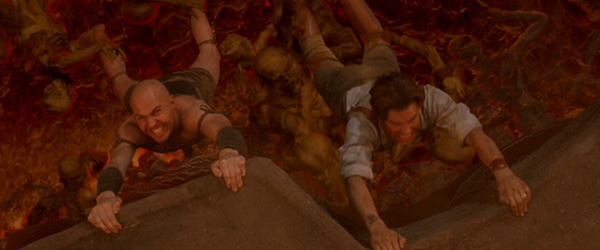
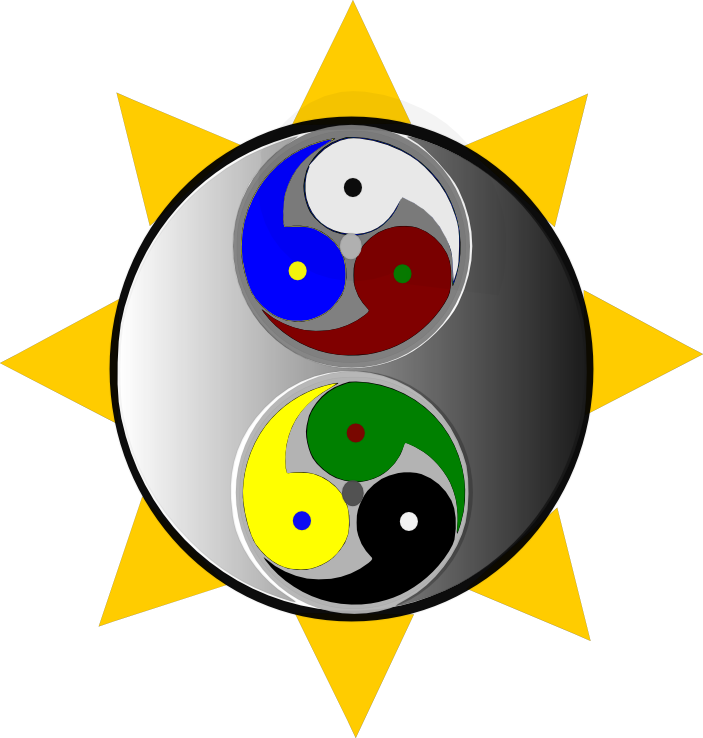 PEOPLE EMBRACING CHANGE
PEOPLE EMBRACING CHANGE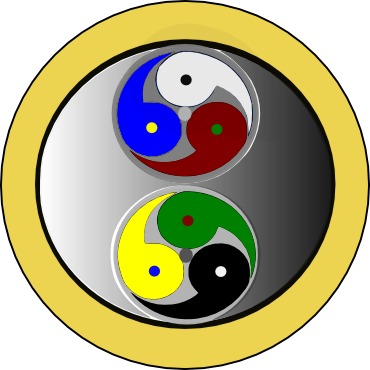

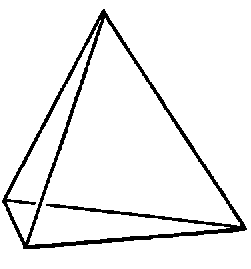 This simple tetrahedron, if body, mind and emotion is in balance creates spirit. It is the essence the blue print, of the person, the processes, and relationships not only with itself but the whole world. The complex dynamic tetrahedron of Life, Love and Truth, creates Integrity. It is the discipline of the process and honest relationship with itself and the world that keeps its structure intact. Together Integrity and Spirit makes the Soul.
This simple tetrahedron, if body, mind and emotion is in balance creates spirit. It is the essence the blue print, of the person, the processes, and relationships not only with itself but the whole world. The complex dynamic tetrahedron of Life, Love and Truth, creates Integrity. It is the discipline of the process and honest relationship with itself and the world that keeps its structure intact. Together Integrity and Spirit makes the Soul. 
